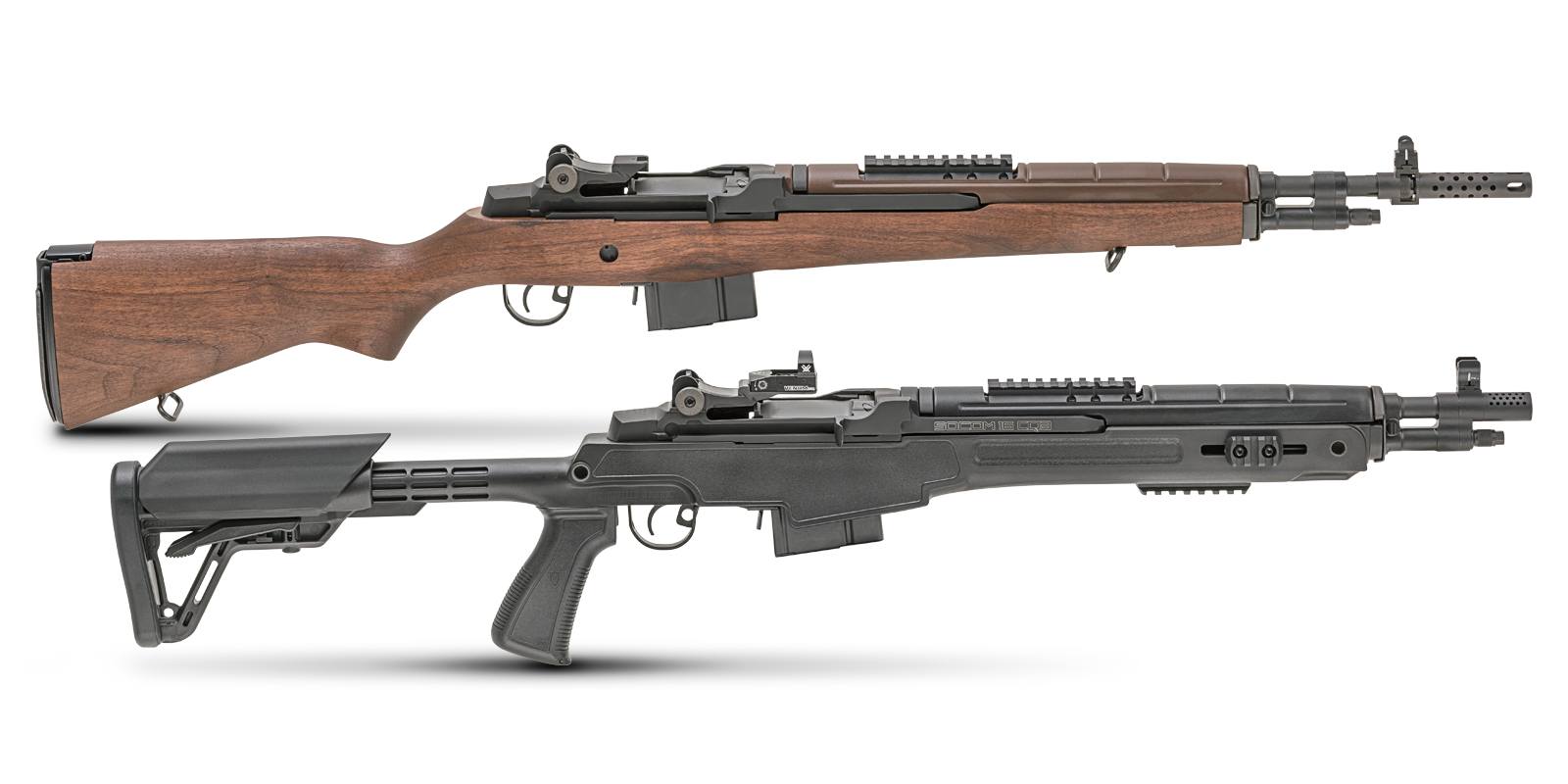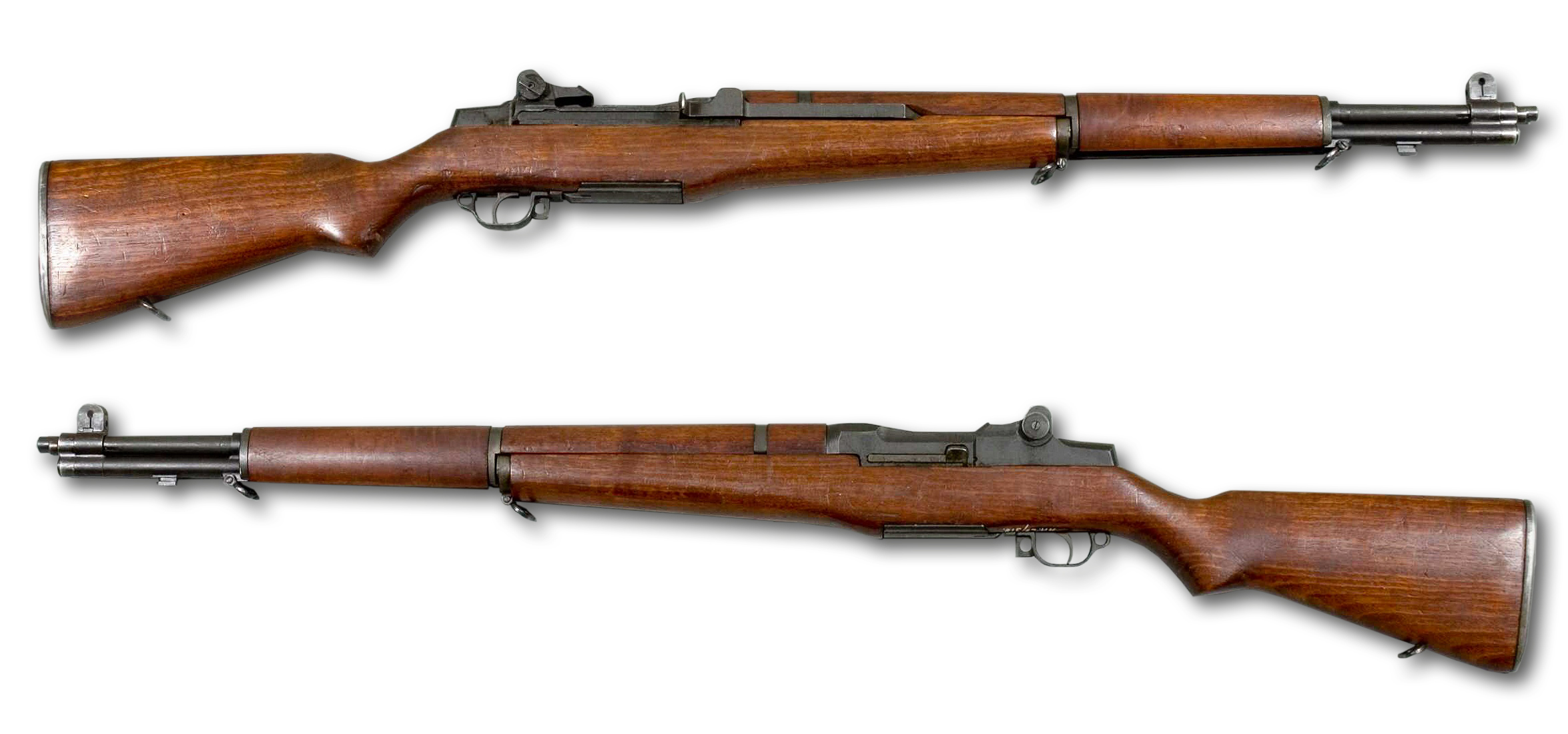M1 Garand Weight - The M1 Garand, officially the Rifle, Caliber .30 M1, is a self-loading rifle that was commissioned in the United States Army from 1936 to 1957.
John C. Garand developed this rifle in the 1930s. Beginning in 1936, it was introduced into the United States Army. Hard and reliable, it was the first loaded military rifle in the United States to see action in combat. The US military used this gun during World War II and the Korean War. The former was the Springfield M1903 bolt-action rifle. The move to the M1 Garand coincided with a significant increase in firepower, making it the primary weapon of the US military during World War II and the Korean War. By the time the project ended in 1957, more than 5.5 million had been completed. It was replaced by the M14.
M1 Garand Weight

The M1 was officially registered by the Wehrmacht and was also used as a hunting weapon. An overview of this can be found in the list of self-priming guns according to n datasheet for outdoor equipment D 50/1.
Garand Pistol By Lucashc90 On Deviantart
The Garand M1 rifle has an air chamber and bolt action. The air cylinder is parallel to the axis of the barrel at the bottom of the barrel, and air is drawn into the cavity just before the muzzle. The pressure produced n after the pull m pushes the air piston back; the control unit, which is attached to it, unlocks the room to return, and it returns to be less than the length of the cart. When the fire box is pushed, the hammer that holds it down is thrown. The bolts in the air piston bore push the system forward; The slide pushes the next cartridge into the cartridge chamber, which is rotated by the control unit and locked. The gun is ready to fire. To lock, the magazine is rotated by a mill link in the control unit, with two locking elements at the front of the magazine engaging pivot bearings designed just behind the barrel in the charging case.
Cartridges are fed from a magazine box built into the weapon instead of a detachable magazine. The magazine box holds eight Springfield .30-06 cartridges, which are inserted "en bloc" into the cartridge clip (cardboard) according to the Mannlicher system. After the last shot, the chamber remains open and the empty clip is fired,
Which allows for quick tracking. Individual cartridges can be refilled if the last cartridge has not been fired. Without a frame, individual cartridges cannot be filled.
For the rifle grenade launcher, the Grena Launcher M-7 is attached. The bolt that is attached from the front enters the air valves, opens the relief valve, reduces the air pressure and special trigger cartridges are used for the allowed gun level.
The M1 Garand Rifle, What Made It Great?
Being a more powerful self-loading rifle, the Garand was superior to the handguns used by other combatants during World War II. This, along with their use as rifled grenade launchers and their machine guns and guns, gave them superior firepower for the US military, which was somewhat inferior to the larger version of the StG 44.
When the United States entered World War II in 1941, there was a sudden demand for sniper rifles. This led to the development of the Springfield M1903A4 and the desire to produce a sniper variant of the M1 Garand. Development is slow. The result was the M1E7 and M1E8 rifles. In June 1944, the M1E7, now designated the M1C, was introduced as the standard sniper rifle and was intended to replace the M1903A4. The M1E8, now the M1D, was introduced in September 1944.
Only a small number of M1Cs and M1Ds were made before World War II. It wasn't until the Korean War that rifles were able to show their potential. Hitting ranges in the range of 400 to 600 yards (about 370 to 550 m) were good. Only the 2.5x magnification and the fact that no special guns were offered were the limiting factors in the maximum range.

These rifles, called M1C and M1D, differ only from the standard rifle and from each other by telescopic sights. The M1C has a 2.5x M81 scope and the M1D has a 2.5x M82 scope. A wide variety of visual distractions were used. There are also M84 and M73B1 telescopic sights, which have 2.5x magnification.
Anatomy: Us Rifle M1 Garand
Both variants were used until the early years of the Vietnam War. The M1D was the official sniper rifle of the US Army until the 1960s.
The M1C became the standard sniper rifle of the US Marine Corps in 1951 and was used extensively during the Korean War. The USMC introduced the 4XD quadcopter in 1954, designed by Stith Kollmorgen.
M1905 Bayonet • M1917 Bayonet • M3 Fighting Knife • M4 Bayonet • KA-BAR • Colt M1911 • Colt Moll 1903 Hammerless • High Standard HDM • M1917 (Revolver) • Smith & Wesson Mol 10 • Colt New Service • Colt Police Officer
M7 Grenade Launcher • M1 Grenade Adapter • M1 • M2 • M2 4.2-inch Mortar • M17 Grenade Launcher
Vintage M1 Garand Ad
Browning Auto-5 Winchester Mol 1897 Ithaca M37 Winchester Mol 1912 Remington Mol 31 Stevens Mol 520/620. W USA idea of träfela na podatny grunt. Armia amerykańska zółta, jako pierwsza na święcie na masową skalę, uzbrojona w samopowtarzalny karabin, skonstruowany przez Johna C. Garanda. Przyjęto go na uszbrojenie w 1936 pod oznaczeniem wojskowym Rifle, caliber .30, M1 (M1 carbine caliber 30). Od nazwiska constructora znany jest jednak powszechnie jako Garand.
Nowy karabin bardzo wolno przyjmował się do uzbrogenia wojsk amerikanich. Na przeszkodzie stahl tu konserwatyzm zawodowych zołędzery, przywiązanych do karabinów rekizavalnych Springfield M1903. Miało to miejsce very w Korpusie Piechoty Morskiej Stanów Zyndocznejn.
Dopiero po ybuchu II wojny wowydnyy karabin M1 złoty na masową skalę przeżyty we wszysztich rodzajach wojsk i doceniono w pleni jego zalety w verządz z karabinami riżużalnymi. Unlike other ówczesnych samopowtarzalnych karabins, the M1 uznawany karabin is za wysoce udaną konstruktcję. Broń byla wytwarzana also w wersi M1C and M1D przeznacznej dla strzelców wyborowych. About 4, 5 million sztuk carabiners were produced.

Karabiny M1 nazolyty you przez wiele lat na uszbrojeniu armii, mostly sojuszników USA. W kilku krajch wyły też produkowane (eg Włoszech). W uszbrojeniu armii ameráskiejnej pozostawał del 1957, kiedy, po wprowadzeniu nowej amunicji (7, 62 mm NATO), zółt zastąpyony przez karabin M14 (bardzo zbliżony do M1nstrukcyjnie).
Brickarms® M1 Garand Rifle
M1 joke bronią samopowtarzalną, strzelającą ogniem pojędzim. Działa na przyceł odprowadzania części gazów prochowych przez boczny otwór z przewodu lufy. Zamek ryglowany przez obrót, za węmą dwóch symetricchnych rygli umieszczonych w przedniej części trzonu zamkowego. Mechanism uderzeniowo-spustowy typu kurkowego. Powystrzeleniu ostatniego pocisku zamek wraz z suwadłem jest zatrzymywany w tylnym położenie dziewie podajnikowi magazynka, korzy w atmomentie wyrzucania łuski nieznacznie podnosi się, ruch doją prczaniko.
Zasilanie amunicją .30-06 ze stałego magazynka or 8 nabojów strong. Magazynek ładoany był przy słowiej dwurzędowego ładownika. In each celownik przeziernikowy.
Characterystyczną cechą karabinu bylo to, że po wystrzeleniu ostatniego naboju ładownik był automatycznie wyrzucany z characterystycznym, głonym metalicznym zówkiem. Krążyły pogłoski, że młogo to informationwać przeciwnika o tym, iż zołędzi musi przeladować bronń. Podobno umządządąło to złożne oszukanie nieprzyjaciela poprzez sztuczne wytworzenie szowku i sprowokowanie go to wyczna z ukryty. In reality jednak, w warunkach bojowych, zwotek ten byl practicznie nieśłyszalny i nie ivyał naję roli. Build M1 kilku kilku bagnetów: M1905, M1942, M1 and M5.
Oznaczeni M1 (M1 Carbine) is a samopowtarzalny karabinek, opracowany w firmie Winchester, przez zeszpol konstruktorów, pod kierunkiem Edwina Pugsleya. Introduced to usprojenia in 1941. Strzela on nabojem darsnam caliber 7, 62 mm US carbine, spécially opracowanym do tej broni. Of course, you can set it up with the M1 Garand carabiner. Earlier this week, we posted the following photo on our Facebook page: This is me with a Korean War era M1 Garand. The reception was a bit bigger than we expected, with comments ranging from "I want one" to people accusing me of sacrilege. These reactions reflect the general debate about the M1 "Tanker" Garands type; It's a classic shotgun with a misunderstood history.
Karabin M1 Garand
Just to catch you up if you don't want to scroll through Facebook, the rifle in the photo is an original Springfield Armory M1 Garand made by Tim Shufflin of Shuff's Parkerizing. The original 24-inch .30-06 barrel has been replaced with a 16-inch .308 Win barrel, eliminating the need for a front sight and reducing overall weight from 9.5 pounds to a lighter 7.7 pounds. more. The result is what Tim calls the "Mini-G," but depending on who you're asking, it may or may not be rightly called a "Tanker" Garand.
This photo from the Springfield Armory Museum shows a surviving example of the experimental T26 Garand next to the T27: a standard-length Garand fitted with a muzzle device.
Traditionally the M1's called Tankers had an 18 inch barrel leaving two inches of front guard like the top rifle in the top photo. But labeling the slightly shorter Mini-G as a tank is not a mistake, as there is no such thing as a "real" tank, or even an official M1, and the term is merely coined for marketing purposes. However, the

Of the shortened version of the M1 fought in the last days of World War II, and this is where it is
0 Comments